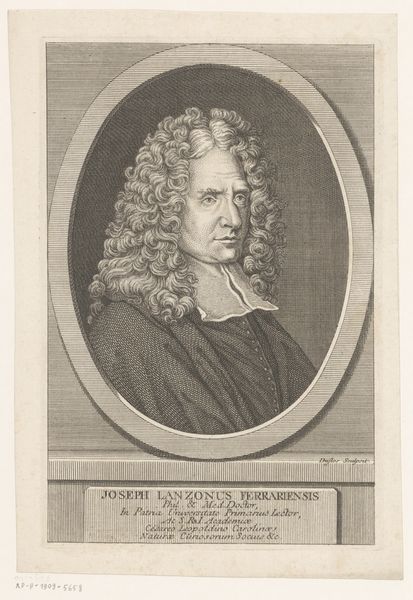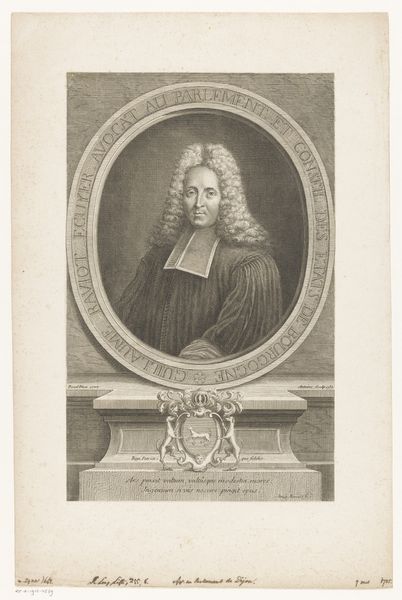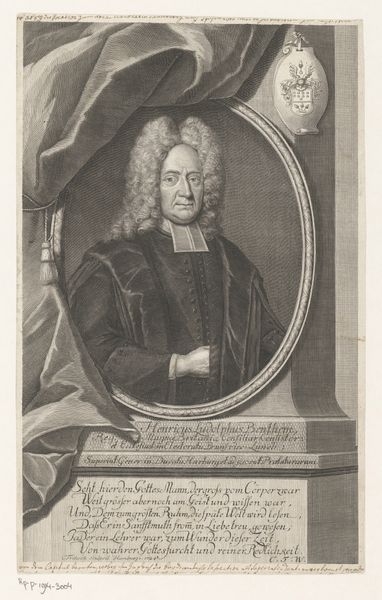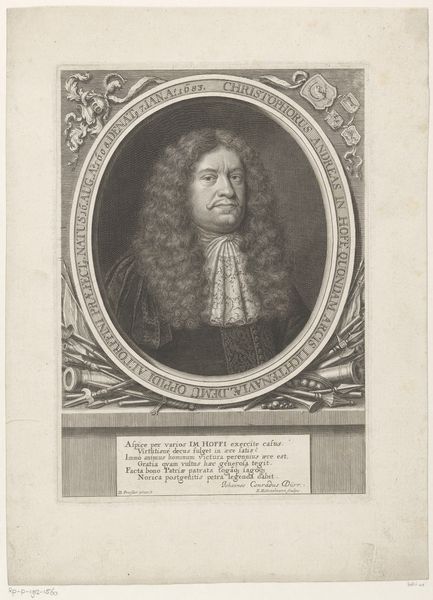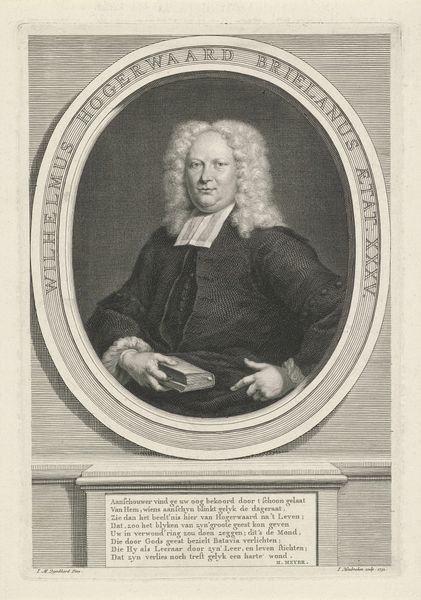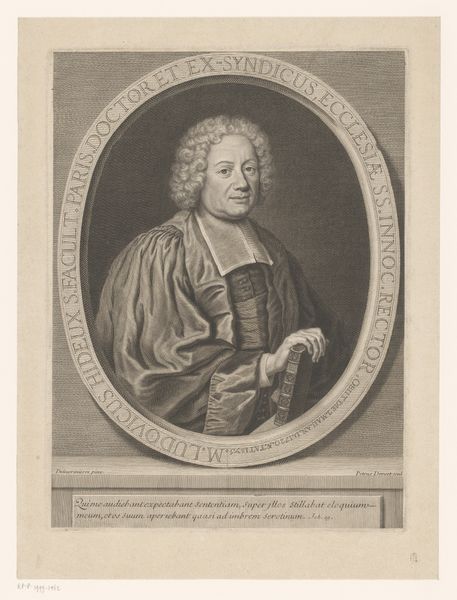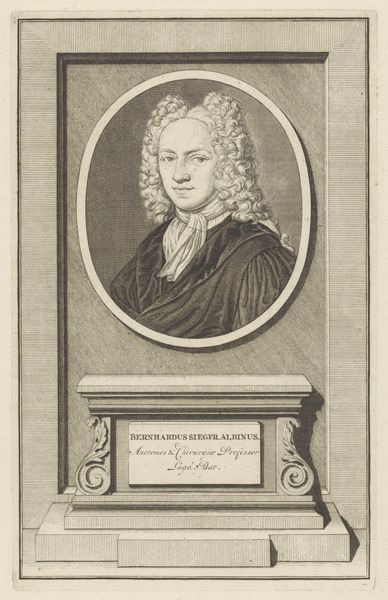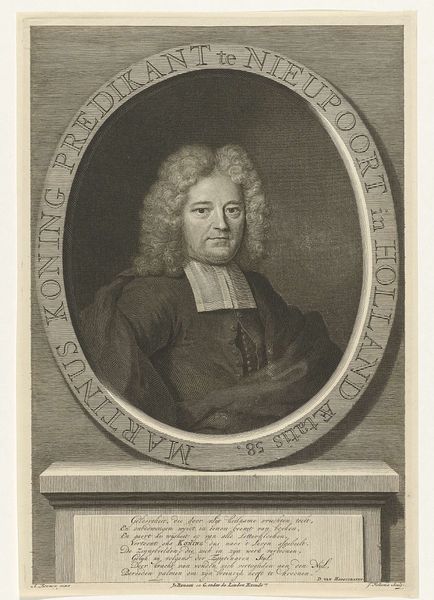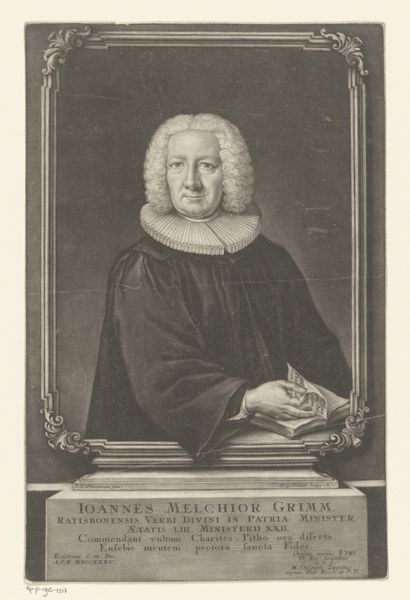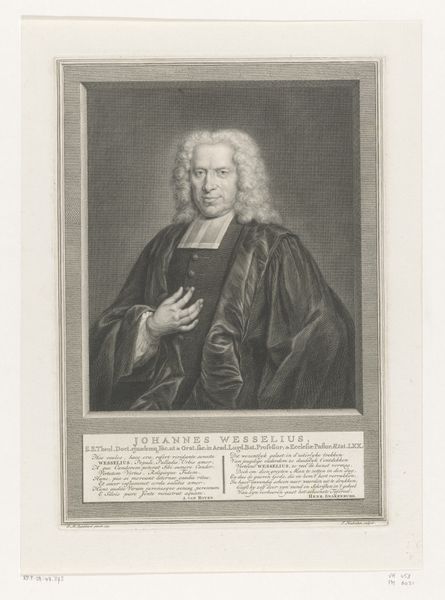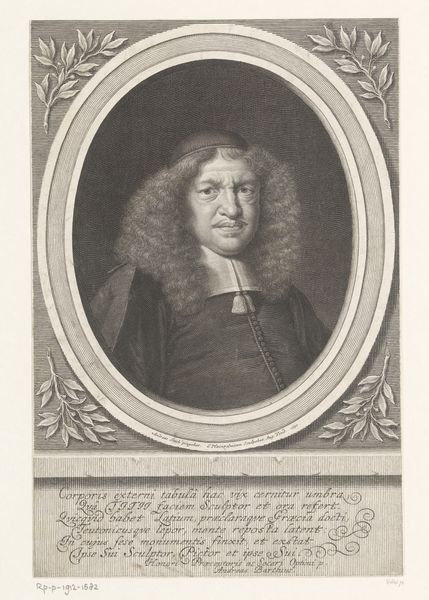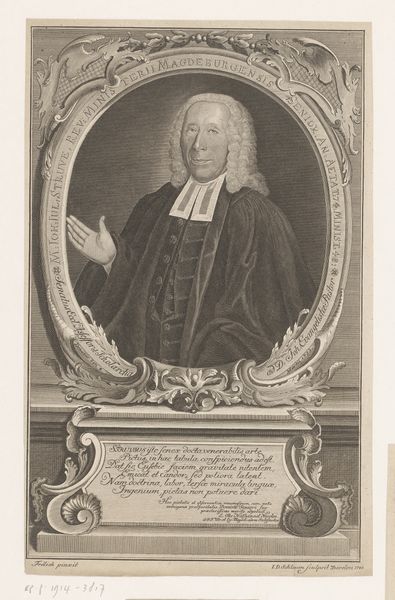
engraving
#
portrait
#
baroque
#
historical photography
#
history-painting
#
engraving
Dimensions: height 234 mm, width 180 mm
Copyright: Rijks Museum: Open Domain
Curator: Welcome. Before us hangs a rendering of Petrus van Musschenbroek, dating from the early to mid-18th century. The artist, Michel Aubert, captured Musschenbroek in an engraving, a fitting choice considering the scientific nature of his work. Editor: It strikes me as a portrait filled with contradiction. The formal attire contrasts sharply with his somewhat unruly wig. It lends an almost humorous quality, doesn't it? Curator: That contrast underscores the very essence of Baroque portraiture. There's the formality of the commission but, equally, a desire to hint at the subject’s character. Notice the details of the engraving: the sharp lines defining the face within the oval frame, set against the almost uniform texture of the background. This creates a depth of field which in turns puts all emphasis onto the subject. Editor: For me, the labor behind it is quite important. Think about the painstaking hours spent incising those intricate lines onto the copper plate! Consider too the socioeconomic elements. Who owned the presses? What was the role of printmakers in disseminating scientific ideas, beyond just immortalizing figures like Musschenbroek? Curator: That is a key aspect of course! The Baroque valued not only ostentation, but technical and artistic perfection, too, even in a 'simple' engraving. And that is captured here! This technique enhances Musschenbroek's expression – the look of concentration. Editor: Looking at the text at the bottom, I realize the piece is not solely about aestheticizing Musschenbroek, it is rather paying him proper homage and emphasizing his role. The conscious blending of scientific pursuits and artistic expression gives rise to the broader, burgeoning of an era of enlightened intellectualism. Curator: Indeed! Ultimately, what we see reflected in Aubert’s work, as translated and transferred through the artist’s skill, captures the duality of the Enlightenment: one which merges art and science, all with an element of humor. Editor: Yes, and recognizing the labor involved certainly makes me appreciate the object in new and layered ways.
Comments
No comments
Be the first to comment and join the conversation on the ultimate creative platform.
